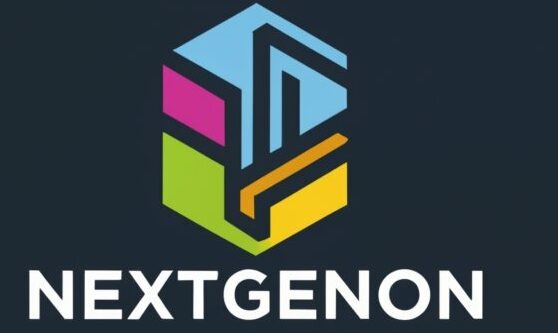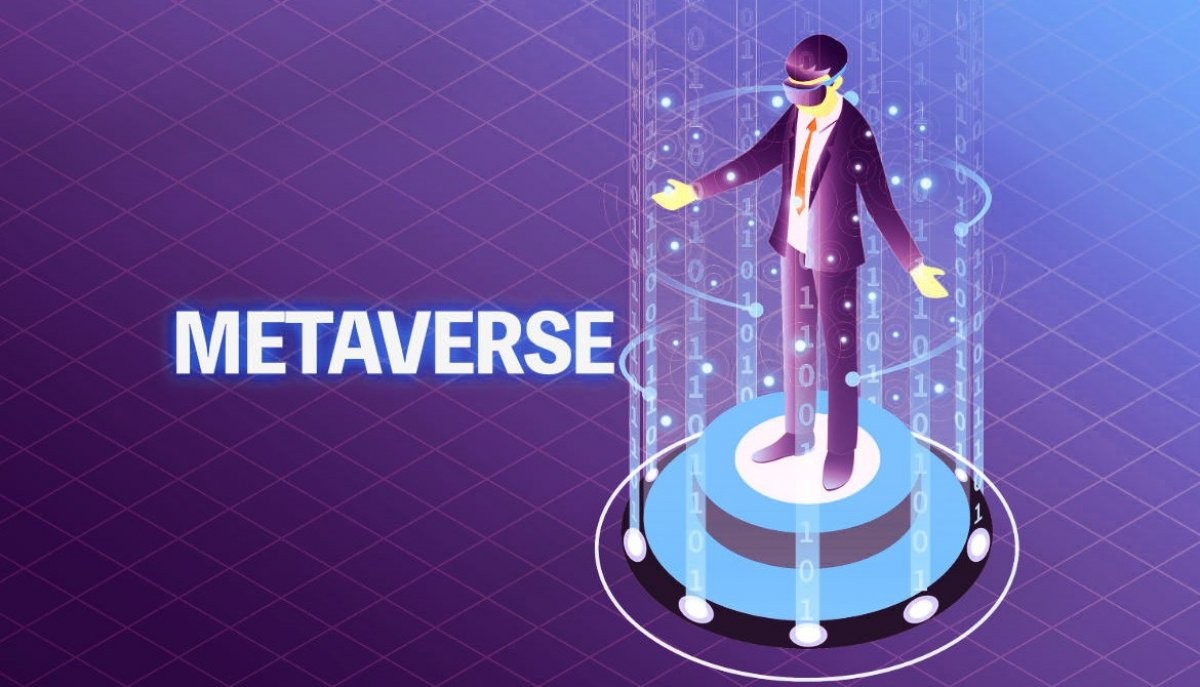Step into a world where reality and the virtual realm seamlessly merge, where you can immerse yourself in endless possibilities and connect with people from across the globe, all without leaving your own home. Welcome to the Metaverse – a digital frontier that is revolutionizing how we interact, explore, and experience life.
Imagine stepping into a virtual world that feels just as real as our physical one. A place where you can teleport to exotic locations, attend concerts by your favorite artists, or even create your own universe from scratch. The Metaverse is not just science fiction; it’s an exciting concept that is rapidly becoming a reality.
In this blog post, we will take a deep dive into the fascinating world of the Metaverse – what it is exactly, how it works, its current state of development, and most importantly, what lies ahead for this revolutionary digital landscape. So fasten your seatbelts and get ready for an eye-opening journey through the realms of possibility!
What is the Metaverse and How Does it Work?
The Metaverse is a term used to describe a collective virtual space where users can interact with each other and their surroundings in real time. It goes beyond traditional virtual reality experiences by creating an immersive digital world that blurs the lines between physical and digital existence.
In the Metaverse, users are represented by avatars, which can be customized to reflect their preferences and personalities. These avatars serve as our digital alter egos, allowing us to navigate through this vast virtual landscape and engage with others along the way.
But how does it all work? The Metaverse relies on advanced technologies such as augmented reality (AR), virtual reality (VR), artificial intelligence (AI), blockchain, and cloud computing to create a seamless user experience. These technologies work together to transport us into a parallel universe that feels incredibly lifelike.
Furthermore, the interconnected nature of the Metaverse allows for endless possibilities. Users can explore different environments, participate in social activities like concerts or conferences, engage in commerce by buying and selling virtual goods or even establish businesses within this digital ecosystem.
As we delve deeper into this exciting new frontier of technology, developers are constantly pushing boundaries to enhance immersion and interactivity within the Metaverse. From haptic feedback devices that simulate touch sensations to brain-computer interfaces that enable direct neural interactions – innovation knows no limits here.
The potential applications of the Metaverse are immense. Imagine attending classes at renowned universities from anywhere in the world or collaborating remotely with colleagues using lifelike holograms. The possibilities for entertainment, education, communication, business opportunities – they’re all waiting just around the corner.
So buckle up! We’re on an exhilarating journey towards unlocking limitless potential within this groundbreaking concept called the Metaverse. Get ready to redefine your understanding of what’s possible when we merge our physical lives with an ever-expanding digital realm!
Current State of the Metaverse
The current state of the Metaverse is a fascinating mix of innovation, experimentation, and rapid growth. It’s like stepping into a digital realm where anything seems possible! From virtual reality (VR) to augmented reality (AR), the boundaries between the physical and digital worlds are blurring like never before.
Companies like Facebook’s Meta, Microsoft, and Epic Games are investing heavily in creating immersive experiences that transport users into alternate realities. With VR headsets becoming more affordable and accessible, people can now dive into breathtaking landscapes or interact with friends from across the globe without leaving their homes.
Gaming has played a significant role in shaping the metaverse landscape. Massive multiplayer online games (MMOs) such as Fortnite and Minecraft have paved the way for social interactions within virtual spaces. These platforms allow users to build their own worlds, trade items with others, or simply hang out with fellow gamers.
But it’s not just about gaming anymore. The metaverse has expanded its horizons to other industries like education, healthcare, and even shopping. Imagine attending classes in virtual classrooms where you can explore ancient civilizations or receiving medical consultations from doctors who can diagnose your condition through AR glasses.
However, challenges still exist on this journey towards building an all-encompassing metaverse. Privacy concerns regarding data collection and security need to be addressed effectively. Interoperability between different platforms also remains an obstacle as each company strives for dominance within its walled garden.
Nonetheless, despite these challenges, the potential of the metaverse is undeniable. We’re witnessing a revolution that will transform how we connect with others, consume content, work remotely – essentially reshaping our entire concept of reality itself!
So buckle up because we’re only scratching the surface of what this brave new world holds for us! The future promises mind-bending technological advancements that will redefine human interaction in ways we couldn’t have imagined before.
Opportunities and Challenges Ahead
As the concept of the Metaverse continues to evolve, it brings with it a multitude of opportunities and challenges. On one hand, the potential for immersive digital experiences is immense. Imagine being able to explore virtual worlds, interact with others in real-time, and create your own unique avatar persona. The possibilities are truly endless.
One opportunity that arises from the Metaverse is its potential impact on various industries. From entertainment and gaming to education and healthcare, the ability to merge physical reality with virtual experiences opens up new avenues for innovation and growth. Companies can leverage this technology to provide more personalized and engaging experiences for their customers.
However, along with these opportunities come several challenges that need to be addressed. Privacy concerns are at the forefront as people increasingly spend time in digital environments where personal data may be vulnerable. Ensuring robust security measures will be crucial in safeguarding user information and maintaining trust.
Additionally, accessibility is another challenge that must be overcome to fully realize the potential of the Metaverse. Making these immersive experiences available to all individuals regardless of their technological background or physical abilities will require concerted efforts towards inclusivity.
Furthermore, ethical considerations must also be taken into account when it comes to content moderation within virtual spaces. Balancing freedom of expression with responsible community guidelines can prove challenging but necessary for creating a safe environment online.
In conclusion (as per instructions), while there are indeed numerous opportunities on the horizon as we delve deeper into exploring the Metaverse, there are also hurdles that need careful navigation. By addressing issues such as privacy protection, accessibility, and ethical considerations head-on, we can pave the way for a future where everyone has access to this transformative digital realm while ensuring safety and inclusivity remain top priorities
The Future of the Metaverse
As we look ahead to the future, it’s clear that the metaverse holds immense potential for transforming our digital experiences. With advancements in technology and connectivity, we are on the verge of entering a new era where virtual reality and augmented reality seamlessly merge with our daily lives.
One exciting possibility is the creation of fully immersive virtual worlds, where users can explore, interact, and even build their own environments. Imagine attending a live concert in a virtual stadium or collaborating on a project with colleagues from around the globe without leaving your home. The possibilities are endless!
Moreover, as artificial intelligence continues to advance, we can expect more intelligent avatars and NPCs (non-player characters) within the metaverse. These lifelike entities will enhance social interactions and enable realistic simulations that blur the line between real life and virtual reality.
Security and privacy will also be crucial considerations moving forward. As more personal information is shared within these virtual realms, ensuring data protection becomes imperative. Striking a balance between personalized experiences and safeguarding user privacy will play a vital role in shaping the future of the metaverse.
Additionally, interoperability among different platforms and devices will be essential for creating an inclusive metaverse ecosystem. Seamless integration across various hardware devices such as VR headsets, smartphones, wearables, etc., will allow users to access this digital realm regardless of their chosen device.
But perhaps one of the most exciting aspects of this future is how it may revolutionize industries beyond entertainment – healthcare, education, retail – all stand to benefit from embracing this technology. Virtual medical consultations could become commonplace; classrooms could extend beyond physical boundaries through immersive learning experiences; shopping could evolve into interactive 3D storefronts that bridge online convenience with real-world engagement.
Conclusion
The Metaverse is a concept that has captured the imagination of tech enthusiasts and futurists alike. With its potential to revolutionize how we interact, work, and play in the digital realm, it holds great promise for the future.
As we have explored in this article, the Metaverse is an interconnected virtual space where users can engage with each other through immersive experiences. It blends elements of virtual reality, augmented reality, and artificial intelligence to create a seamless and interactive digital world.
Currently, we are still in the early stages of developing the Metaverse. Companies like Facebook’s Meta (formerly known as Facebook) are investing heavily in building their versions of this futuristic concept. However, there are also challenges that need to be overcome before widespread adoption can occur. Issues such as privacy concerns, technological limitations, and ensuring inclusivity must be addressed for the Metaverse to reach its full potential.
Despite these challenges, opportunities abound within the Metaverse. From gaming and entertainment to education and remote collaboration – there is no shortage of possibilities for innovation and growth. Businesses can tap into this burgeoning market by creating immersive experiences that cater to user needs within this new digital frontier.
Looking ahead into the future of the Metaverse,the possibilities seem endless. As technology continues to advance at a rapid pace,and more people embrace virtual interactions,it is likely that our lives will become increasingly intertwined with this digital realm.

